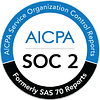A Strategic Imperative
The article discusses the importance of managing staffing levels in unscheduled healthcare.
A healthcare organization’s vision is to deliver unscheduled healthcare how and when patients need it, whether in the emergency department, urgent care, or via telehealth. Regardless of how patients access care, it must be delivered with a world class patient experience and seamless integration into the entire healthcare ecosystem.
Once there is a vision, strategic alignment becomes the central element of business strategy. There must be alignment of capabilities, systems, workflow, goals, and the various organizations and individuals involved. Trade-offs are required, and to a certain extent, the pros and cons of any one portion are less significant than overall alignment. For telehealth, there are also certain critical points that will have an outsized impact on the overall patient experience and level of quality, e.g. transition from a telehealth visit to in person services.
To be successful, scheduled telehealth and unscheduled telehealth must be managed separately and as part of their respective ecosystems. Processes, workflows, and escalations align more closely with the nature of the care than the medium through which it is delivered. Here, we focus on unscheduled healthcare which is an important aspect of any healthcare delivery system. Unscheduled care improves the patient experience and allows for more efficient utilization of scheduled healthcare resources. Delivering unscheduled care is challenging because both patient demand and acuity are unpredictable and highly variable. Thus, managing unscheduled healthcare requires managing unpredictability and associated cost implications.
One thing holding healthcare organizations back from managing unpredictability is inadequate staffing levels. Critical staffing shortages are impacting industries across the United States but mostly healthcare. If healthcare organizations are struggling when it comes to staffing levels in scheduled healthcare, how can they plan and staff for unscheduled healthcare? One way that healthcare organizations can staff at appropriate levels without severe cost implications is to use global staff where available. Applications of global staff where remote work can be done, areas such as virtual visits, medical billing, eligibility verification, customer service, etc., oftentimes will free up local staff so that they can better serve unscheduled healthcare.
Telehealth is ushering a new set of challenges and opportunities in healthcare. It is imperative that healthcare organizations start thinking about ways to innovate and adapt to maximize patient experience and opportunities to grow.
Connext Global Solutions is a business process outsourcing company that provides fully customized outsourcing solutions for healthcare organizations looking to improve healthcare operations.
Connext Global Solutions offers custom healthcare outsourcing solutions. Here is a list of common roles with their accompanying tasks that you can delegate to a Healthcare outsourcing and staffing solutions provider like Connext Global Solutions:
- Medical Coding Specialist
- Medical Billing Specialist
- Eligibility Verification Specialist
- Prior Authorization Specialist
- Virtual Nurse
- Virtual Optometrist
- Patient Care Coordinator
- Patient Scheduler
- Medical Claims Appeals Specialist
For more information and insights on how we can support healthcare organizations, please visit our industries page at https://www.connext.solutions/healthcare/
Outsource Healthcare services to Connext today.
Connext Global Solutions helps companies build custom, dedicated support teams in the Philippines. Learn more about Connext Global Solutions.
Follow us on:
Facebook: Connext
LinkedIn: Connext
Instagram: @connextglobalsolutions_
Twitter: @ConnextPh







